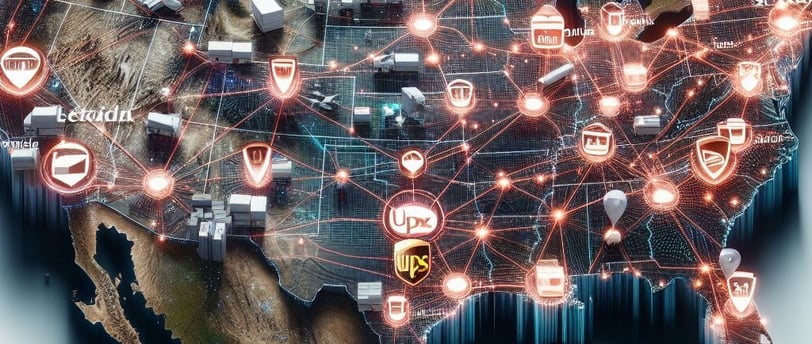Effective US Distribution Made Simple
Great advantages ahead
Omar Rebaza
12/11/20232 min read


Distribution is a critical aspect of any business, and for small enterprises navigating the diverse and expansive landscape of the United States, it comes with its own set of challenges. In this blog, we'll explore the hurdles small businesses often encounter in distribution and discuss strategies to overcome them, ensuring a streamlined and efficient supply chain.
1. Geographic Complexity:
Challenge: The vast geography of the US poses a logistical challenge for small businesses, particularly those serving customers across different states.
Strategy: Utilize regional distribution centers strategically located to reduce shipping costs and delivery times. Leverage third-party logistics (3PL) providers with a nationwide network.
2. High Shipping Costs:
Challenge: Small businesses may struggle with high shipping costs, impacting their ability to offer competitive pricing and maintain healthy profit margins.
Strategy: Negotiate shipping rates with carriers, explore bulk shipping discounts, and consider partnerships with regional carriers to optimize costs. Offering free shipping thresholds can incentivize larger orders.
3. Inventory Management:
Challenge: Maintaining optimal inventory levels across multiple locations can be challenging for small businesses with limited resources.
Strategy: Implement inventory management systems to track stock levels in real-time. Utilize forecasting tools to anticipate demand and avoid overstocking or stockouts.
4. E-commerce Integration:
Challenge: Small businesses often face difficulties integrating their e-commerce platforms seamlessly with their distribution systems.
Strategy: Invest in integrated software solutions or platforms that sync inventory, orders, and shipping information. This ensures a cohesive and automated process from order placement to delivery.
5. Customer Expectations:
Challenge: Meeting customer expectations for fast and reliable delivery can be challenging, especially when competing with larger retailers.
Strategy: Clearly communicate delivery times, manage customer expectations, and consider offering express shipping options. Establish partnerships with reliable carriers to ensure timely deliveries.
6. Returns and Reverse Logistics:
Challenge: Handling returns and managing reverse logistics can be complex and costly for small businesses.
Strategy: Develop a streamlined returns process, clearly communicate return policies to customers, and consider partnering with third-party providers specializing in reverse logistics to manage returns efficiently.
7. Regulatory Compliance:
Challenge: Navigating the complex web of regulations, especially related to shipping and product distribution, can be daunting for small businesses.
Strategy: Stay informed about regulatory requirements, work closely with legal advisors, and invest in compliance management systems to ensure adherence to local and federal regulations.
8. Technology Adoption:
Challenge: Small businesses may face challenges in adopting and integrating advanced technologies for efficient distribution.
Strategy: Gradually adopt technology solutions like warehouse management systems (WMS), order fulfillment software, and track-and-trace systems to enhance operational efficiency.
9. Supplier Relationships:
Challenge: Establishing and maintaining strong relationships with suppliers is critical for timely and cost-effective distribution.
Strategy: Communicate effectively with suppliers, negotiate favorable terms, and explore opportunities for bulk purchasing or strategic partnerships to optimize costs.
10. Competing with Larger Players: - Challenge: Small businesses often compete with larger retailers with extensive distribution networks and resources. - Strategy: Differentiate your business through personalized customer service, unique products, and agile decision-making. Focus on niche markets and leverage the flexibility inherent in small businesses to your advantage.
Conclusion: Navigating the Distribution Landscape
While challenges in distribution are inherent for small businesses in the US, they can be overcome with strategic planning, technology adoption, and a customer-centric approach. By addressing issues related to geography, shipping costs, inventory management, e-commerce integration, customer expectations, returns, regulatory compliance, technology adoption, supplier relationships, and competition, small businesses can navigate the distribution landscape successfully and provide a seamless experience for their customers. Remember, agility, innovation, and a commitment to customer satisfaction are key ingredients for overcoming distribution challenges in the dynamic business environment of the United States.
